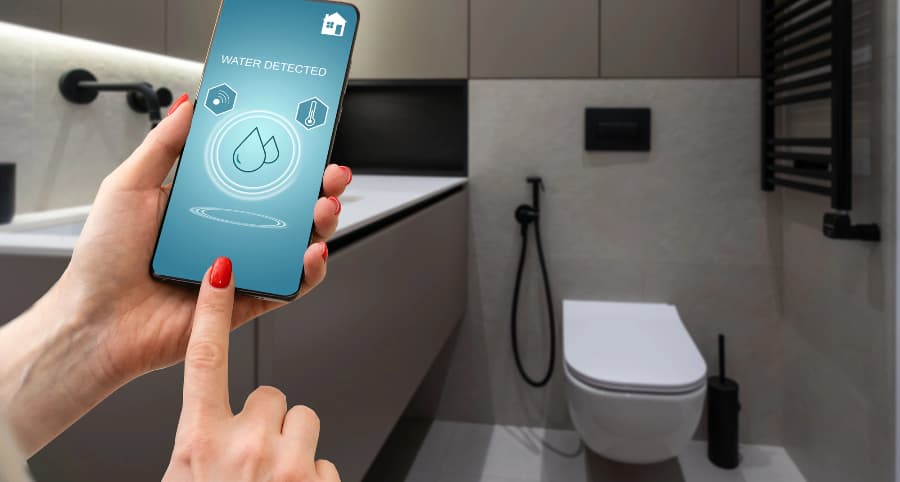How does a water sensor work and why use one with your San Antonio smart home?

One minor leak at your property can result in significant problems and thousands in damage. You must safeguard against this risk; fortunately, there’s an easy way to do so. A water sensor is an economical, simple, and effective solution. Learn how they work and why you ought to incorporate water sensors into your San Antonio smart home.
How water sensors shield San Antonio your home
Water infiltrates homes in many ways, whether from a weather-related event, plumbing failure, appliance malfunction, or human error. Whatever way it occurs, you must know at once, and this is why water sensors are important. But how do they really work?
The majority of water sensors are conductive and operate with a pair of electrodes. When water invades the space between the electrodes, an electrical link is established, triggering your alarm. You’ll also find capacitive sensors that release an electrical field. When water contacts the conductive parts of these devices, the field is broken, and your alarm triggers. Optical sensors utilizing infrared LED light are an additional possibility.
Get more from your water sensor
Some advanced water sensors provide even more protection as they have incorporated temperature sensors. This is a helpful way to prevent pipe freezing. If there’s an extreme drop in temperature, you’ll be notified right away. Taking measures before pipes burst will save you from water damage and exorbitant repair costs.
Why integrate water sensors into your San Antonio smart home?
When water issues occur, you have to be alerted right away. You can reach this aim by connecting water sensors to your smart home. Whether you’re on site to hear the alarm or somewhere else, you’ll be sent an immediate notification on your smartphone. As an added benefit, your 24-hour monitoring specialists will be notified. Each moment matters in a water emergency to control the damage and disturbance to your household.
Where should you install water sensors?
Any location susceptible to flooding is an appropriate place for water sensors. Install them in these areas:
- Bathrooms: Position next to bathtubs or at the back of toilets.
- Basements: Water frequently infiltrates lower levels through leaky walls or as a result of heavy rain or malfunctioning sump pumps.
- Around water heaters or appliances: Any water-using appliance might leak in time.
- Under sinks: Water sensors are perfect for identifying plumbing leaks in areas you can’t see.
- Attics: Identify roof leaks quickly and prevent costly repairs.
Request water sensors with your Vivint smart home
Give your property the comprehensive protection it needs with Vivint’s innovative devices. Our water sensors in San Antonio link to your Vivint cell phone app to deliver instant updates when your alarm goes off. You also enjoy built-in temperature sensors to prevent pipe freezing. Explore the smart home tools available in San Antonio by calling (210) 934-3694 today.
